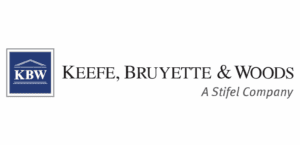Directors and Officers Insurance Insights 2023

Authored by Allianz
Being the director, partner or officer of a company is a great way to shape a business and contribute to its success. But, as these individuals are also personally liable for the actions they take in their roles, understanding and mitigating these risks is essential.
The set of risks any director faces are unique. Some will be dependent on the nature of the business and their approach to risk taking but others come down to the broader market and economic environment.
These broader market conditions change too, with new risks and potential liabilities emerging. A good example of this is the way the world has changed post-pandemic. As normality returned, demand for goods soared, resulting in rising prices and inflation but also supply chain issues as manufacturers struggled to get their products to market.
Risk management activities such as reviewing the supply chain and assessing ESG practices, can help reduce some of these risks but insurance also has an important role to play.
Constantly scanning the horizon to identify and mitigate risks is important. In our three part series we discuss the three key issues to watch:
Part 1: Economic uncertainty
Economic and recession risks
Macroeconomic issues such as the state of the economy, global conflict and fuel prices have a major influence on the way that businesses perform. And, with higher operating costs and plenty of economic uncertainty in evidence, insurers are watching closely how this affects Directors and Officers claims.
Economic conditions have been relatively benign in the UK for many years, with the Bank of England able to keep inflation below the 2% target set by the government in the 1990s. This brought stability for prices and wages but also low interest rates to enable business growth.
Inflation returns
However, everything started to change in 2022. Post-pandemic supply chain bottlenecks coupled with higher energy and transportation costs pushed prices upwards. This was compounded by trade barriers such as Brexit and US import tariffs on Chinese goods, which added further costs to goods, affecting consumers and businesses alike.
In February 2022, the war in Ukraine caused further price shocks for a wide range of commodities including energy, food, and construction materials. By October 2022, figures from the Office for National Statistics show that UK inflation had reached a 41-year high of 11.1%.
Similar inflationary pressures can be seen all around the world too. In October 2022, inflation in the Eurozone hit a record high of 10.7%, while in the US, consumer price inflation reached a 40-year high of 9.1% in June 2022.
Business challenge
High inflation is challenging for businesses. As the cost of producing goods or delivering services increases, it can be difficult to set prices. Custom may also dry up as price rises outstrip wage increases. It also pushes up interest rates.
In the UK, 2022 started with the Bank of England base rate at 0.25%, a rate it had held throughout the pandemic. Eight base rate increases were made that year to control inflation, with further ones in February and March 2023 bringing the rate to 4.25%.
The higher cost of borrowing can mean that many businesses will put expansion plans on hold, especially given all the economic uncertainty.
This also raises fears of a recession. Although the UK narrowly avoided a recession in January, with the economy expanding by 0.3% after a decline of 0.5% in December, it is still a possibility. Nearly 2.5 million working days were lost between June and December 2022 as a result of industrial action.
The global picture is equally bleak. Allianz Research expects Eurozone growth to plunge to -0.8% in 2023 due to soaring energy prices, with negative confidence creating a shock on real disposable incomes and corporate margins.
It also expects the US will see a -0.7% fall in GDP, due to rapidly tightening monetary and financial conditions. This is likely to significantly cool the housing market and consumer spending.
Insurer reaction
As challenging economic conditions fuel insolvencies and Directors and Officers claims, insurers are monitoring these areas closely. The UK is already seeing an uptick in the number of registered company insolvencies, with 1,783 businesses declared insolvent in February 2023.
Allianz research shows that the sectors most at risk of a liquidity and profitability squeeze are: construction, transportation, telecoms, machinery and equipment, retail, household equipment, electronics, automotive and textiles.
To survive, a business must be able to offset higher wage bills, energy and borrowing costs with increases in productivity.
“Companies may start looking at how they can reduce costs or ‘trim the fat’ in an effort to maintain or improve their financial performance in what is a very challenging economic climate. Identifying areas where they can improve operational performance or save money may prove more vital than ever as we continue to navigate the current economic downturn,” says Joe Roberts, Speciality Lines Underwriting Manager, Allianz.
Part 2: Environmental, social and governance
ESG disclosures and exposures
Adopting an ESG framework is increasingly important to many businesses, as more and more customers, employees and regulators assess whether companies are taking their environmental, societal and governance responsibilities seriously.
It’s also something that is relevant to the D&O market. As well as fast-evolving legislation around issues such as climate change, the introduction of compliance disclosure requirements around the world increases the risk of directors facing regulatory or legal action.
ESG disclosures
Some UK businesses will already have ESG reporting requirements. As examples, all quoted companies must report details of greenhouse gas and energy use and the Task Force on Climate-related Financial Disclosures (TCFD), which requires information on climate-related risks and opportunities, currently applies to more than 1,300 of the largest UK-registered companies and financial institutions.
Even some smaller companies may find themselves having to make ESG disclosures. For example, any employer with a headcount of 250 plus must comply with gender pay gap reporting requirements and businesses with an annual turnover of at least £36 million must publish an annual modern slavery statement.
But while ESG reporting is not yet mandatory for all businesses in the UK, this is expected to change. Pressure from governments, environmental groups and activist investors is pushing ESG reporting on to the corporate agenda.
“We’re moving to an environment where managing ESG exposures is becoming more and more prevalent,” says Joe Roberts, Speciality Lines Underwriting Manager, Allianz.
Being prepared for what this may entail is sensible. Understanding the organisation’s approach to ESG and whether it has the capabilities and data to report to a regulator can help. For some businesses, preparations may also involve the adoption of more environmentally friendly processes and packaging ahead of the introduction of any reporting requirements.
It’s also important to remember that embracing ESG is positive from a business perspective. Increasingly, customers and employees are seeking out companies that meet ESG criteria so taking this step now could benefit the business, as well as the environment and society.
ESG exposures
Even without regulatory reporting requirements, businesses are increasingly finding themselves with potential ESG exposures. Polluting the planet, using child labour or discriminating against employees and a company and its directors could find themselves in court and in the press.
As an example, companies that do not comply with international agreements such as the Paris Agreement, which sets out long-term goals on tackling climate change, could find themselves falling foul of activist and investor action. Failure of directors to assess the impact of climate change in their business could lead to claims they have breached their duty of care to the company.
A rise in social, diversity and inclusion issues is also being observed. Employees who feel they have been discriminated against or constructively dismissed, especially during the Covid-19 pandemic, may pursue directors, as well as the company, for damages.
In addition, directors who are perceived as not taking enough action to stamp out discrimination, or are regarded as enabling such a culture to develop, could also find themselves exposed to litigation.
Insurer reaction
As mandatory ESG reporting is adopted more widely, regulatory action due to ESG-related issues is a major concern for directors. A breach in regulations can trigger a D&O policy, subject to its terms and conditions.
Companies and their directors could also face the prospect of increasing litigation from environmental groups, activist investors, and even disgruntled employees. Although criminal fines and penalties are not covered under a D&O policy, it could pick up defence costs.
ESG-related liabilities could potentially become significant exposures for D&O insurance. This is likely to lead to insurers requesting more information about the steps a company is taking to manage its ESG risks.
As ESG becomes part of a company’s responsibilities, those with strong ESG frameworks and governance will likely find insurers more willing to offer cover.
Climate change litigation
Globally, the cumulative number of climate change-related litigation cases has more than doubled since 2015. Just over 800 cases were filed between 1986 and 2014, and more than 1,200 cases have been filed in the last eight years1 – of which nearly three quarters were filed before courts in the US.
Although many of these cases don’t make it to court, this is expected to change in 2023 as a group of children and young people take a case against the US state of Montana. They will argue that the state is failing to protect their constitutional rights, including the right to a healthy environment.
The bulk of cases may still be in the US, but The European Court of Human Rights is dealing with a number of climate cases too. These include a group of Swiss women – Senior Women for Climate Protection Switzerland – who are bringing a case against the government, arguing that climate change and especially heat waves affects their health and human rights.
The outcome of these cases is being watched closely. Success could trigger further claims, against private companies as well as governments.
Part 3: Supply chain disruption
Supply chain disruptions
Global supply chains are facing the worst disruption since the 1970s, with businesses grappling with everything from trade barriers to goods and labour shortages.
Current supply chain disruption can be traced back to the pandemic. As lockdowns shut down production lines and fuelled very different consumer buying habits, there were shortages in everything from timber to toilet paper.
Pandemic-related disruption may be behind us now, especially since China abandoned its zero-Covid policy in December 2022, but other disruptors remain.
A shortage of lorry drivers has grounded goods around the world. In the UK, the Road Haulage Association says the combination of an ageing workforce, the loss of EU drivers and the economic shock caused by the pandemic mean the sector has a 50,000 shortfall in drivers.
Trade barriers are another cause of disruption. Brexit has reduced the amount of goods that flow between the UK and the EU. The latest government figures show that total trade in goods (imports plus exports) with EU countries was down by 23.1% in the first quarter of 2021.
“Following Brexit, there is the potential for freight timescales to be impacted meaning that the length of time to obtain materials may lead to longer contracts. This could potentially affect a company’s client base if they turn elsewhere for their goods and service demands,” says Joe Roberts, Speciality Lines Underwriting Manager, Allianz.
Another major supply chain challenge results from the war in Ukraine. This has seen supplies of metals, grains and other commodities seriously affected. As an example, between them, Russia and Ukraine account for almost a third of the global wheat export market.
Even the weather can cause disruption. In February 2023, British supermarkets were forced to ration tomatoes and other vegetables as cold weather, heavy rain and flooding ruined the harvest in southern Europe.
D&O insurance implications
Supply chain disruption is a headache for businesses but also for D&O insurers. As delays in the supply chain can increase the likelihood of businesses failing to meet contractual agreements, this pushes up the risk of insolvency and litigation.
The UK is already seeing a sharp rise in the number of registered company insolvencies. In February 2023, 1,783 businesses in England and Wales were declared insolvent – a 17% increase on a year earlier.
While factors such as lorry driver shortages and the weather are out of most business owners’ hands, there are ways to manage the risk in a supply chain.
Understand the supply chain
As a business grows its supply chain can become increasingly complex but it is essential to maintain a comprehensive view across all suppliers. Undertaking due diligence on second and third tier suppliers, as well as first tier, will help to identify any weak links that could potentially bring the whole chain down.
Spread the risk
Having one or two suppliers may simplify supply chain management – and give a business access to special terms – but it can also leave it exposed to additional risk.
“If there is an over-reliance on one supplier, this could potentially bring an enhanced risk where increasing supply costs or delays in the supply of materials affect the company’s profits,” says Joe Roberts, Speciality Lines Underwriting Manager, Allianz.
Having more than one supplier means that, if one fails to deliver, there’s a back-up. It can also encourage healthy competition on pricing. Companies can benefit from this diversification by choosing different types of suppliers, for example a UK and a European supplier or an SME and a larger company.
Build relationships
It’s also beneficial for a company to build strong relationships with all its suppliers and customers, especially when there is the potential for supply chain disruption. Having good relationships with suppliers encourages collaboration and can prove particularly valuable in challenging times.
Similarly, working closely with customers can help manage expectations and open up discussions about alternative ways to deliver services or goods.
Technology and supply chain risk management can also help to manage risk across a company’s suppliers. These approaches can identify potential risks quickly and ensure that goods are moved in the most efficient way possible.
But, as supply chain disruption continues, businesses must ensure that risk is kept to a minimum with all their suppliers and customers.
What’s directors and officers insurance?
Directors and Officers insurance (D&O) provides personal liability cover for company directors which can protect them from claims that may arise from the decisions and actions they take. Policies can also include cover for the business if claims are brought against it rather than individuals.
Although many people believe D&O insurance is only needed for larger, multinational companies, smaller companies have their own exposure too.
“UK legislation is evolving and increasing and there’s a perception that we’re becoming more litigious. SMEs may not have the level of resources necessary to keep up to date with the changes. This could leave them at risk of legal action,” says Joe Roberts, Speciality Lines Underwriting Manager, Allianz.
Directors and officers insurance – market dynamics
The UK D&O market has been challenging since 2020 but there are signs that it is becoming more competitive again, with rates beginning to soften. Some of this may be down to insurers looking to strengthen their D&O books after they were impacted during the pandemic.
But there is still caution. As well as facing a lot of risk due to macroeconomic issues which could lead to an uptick in claims, inflation means that claimants are likely to seek larger settlements.
This has prompted more discussions around risk management and how directors can protect themselves and their businesses during this time.
Please contact your usual Allianz representative to discuss how our Directors and Officers products can support your customers.
You can also find more information within our Business Risk Support pages





